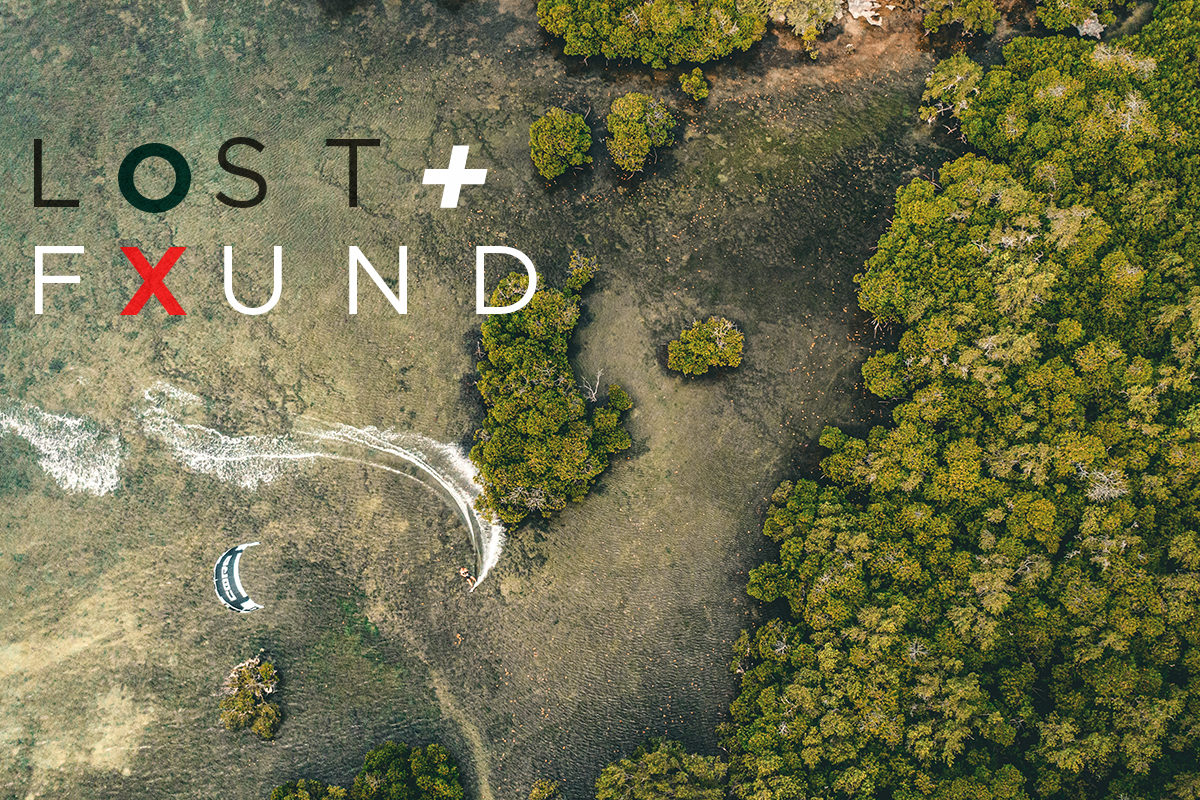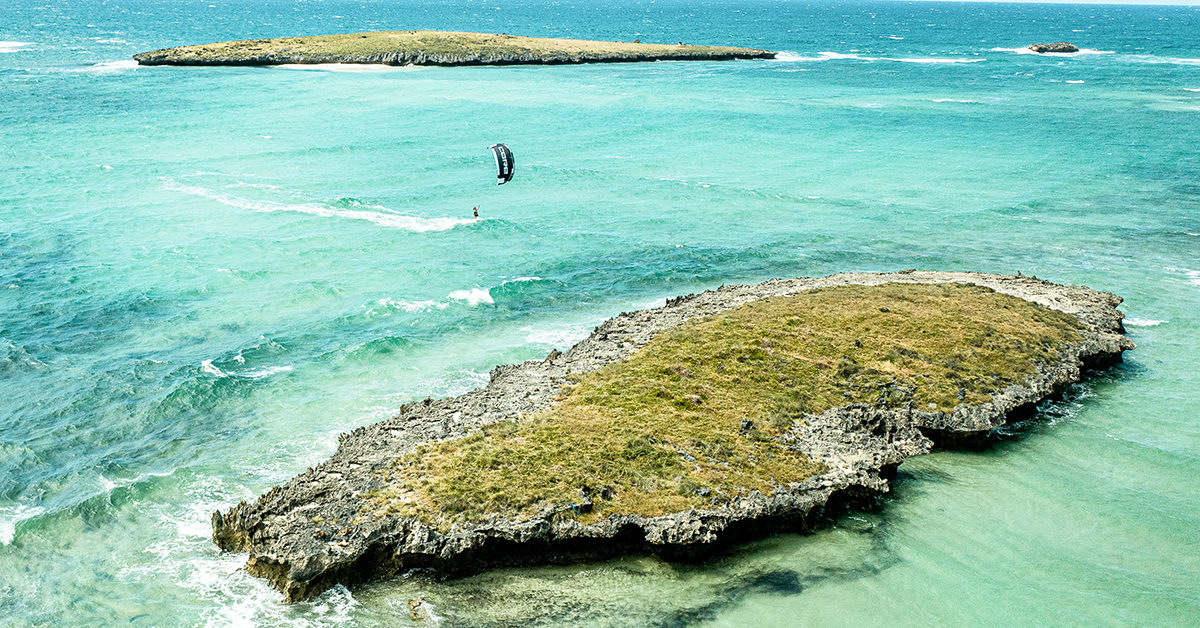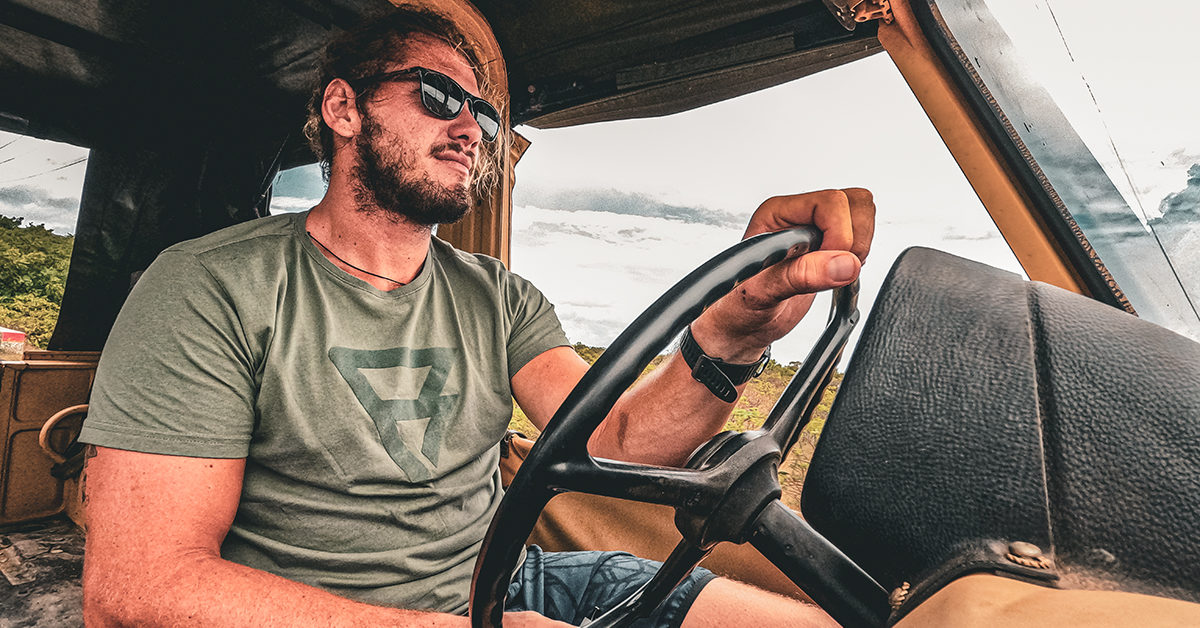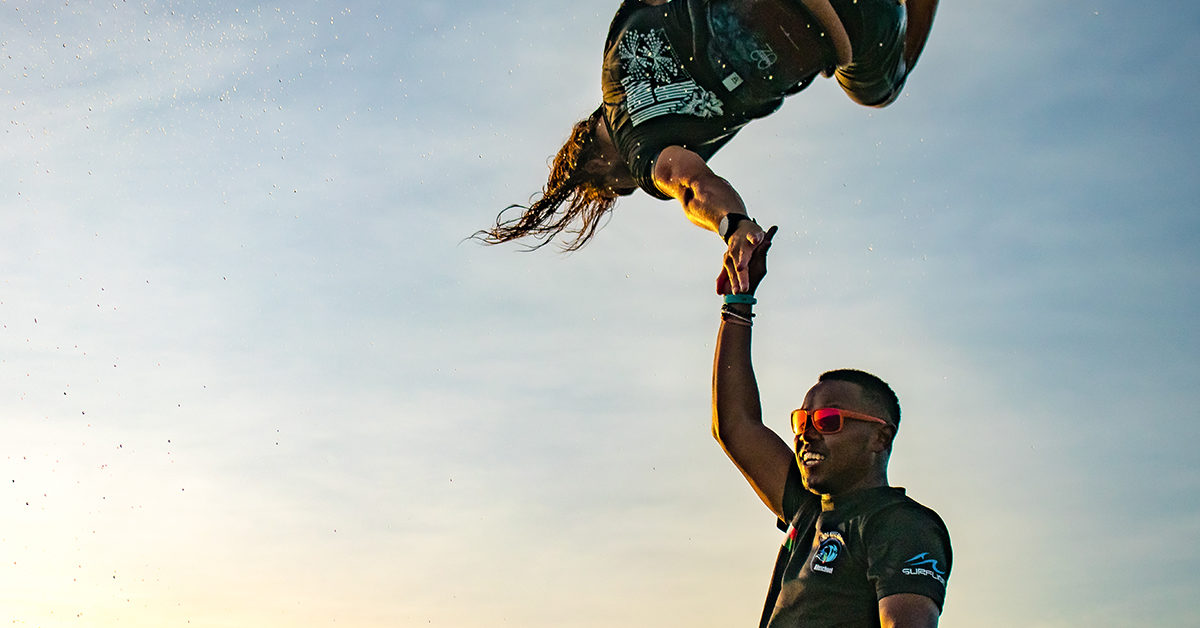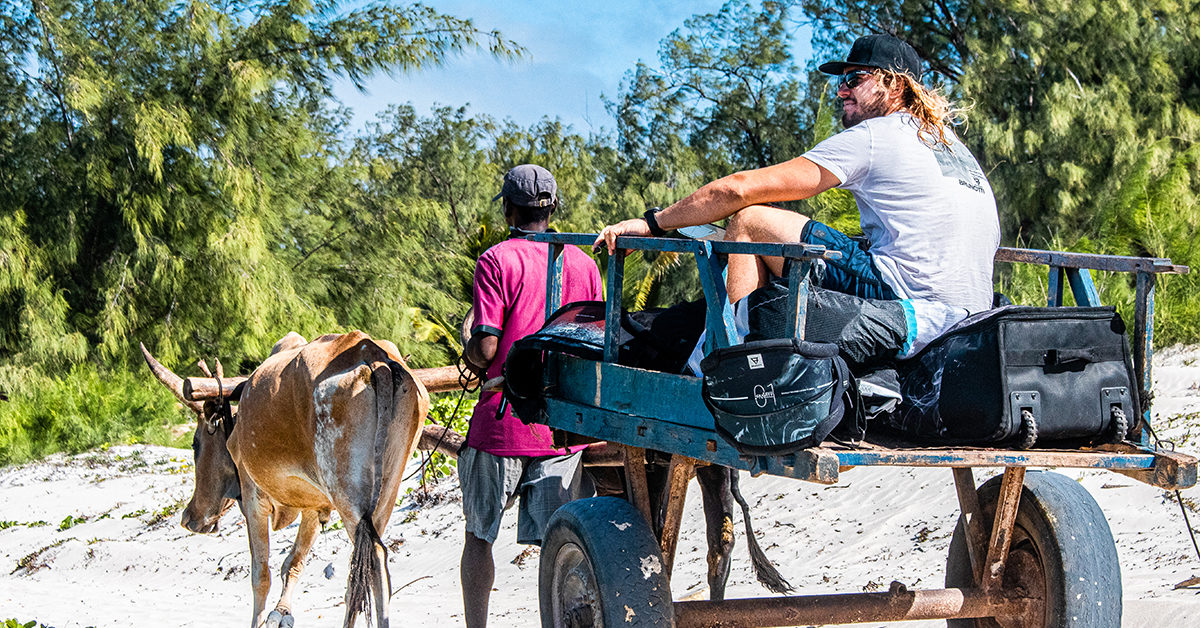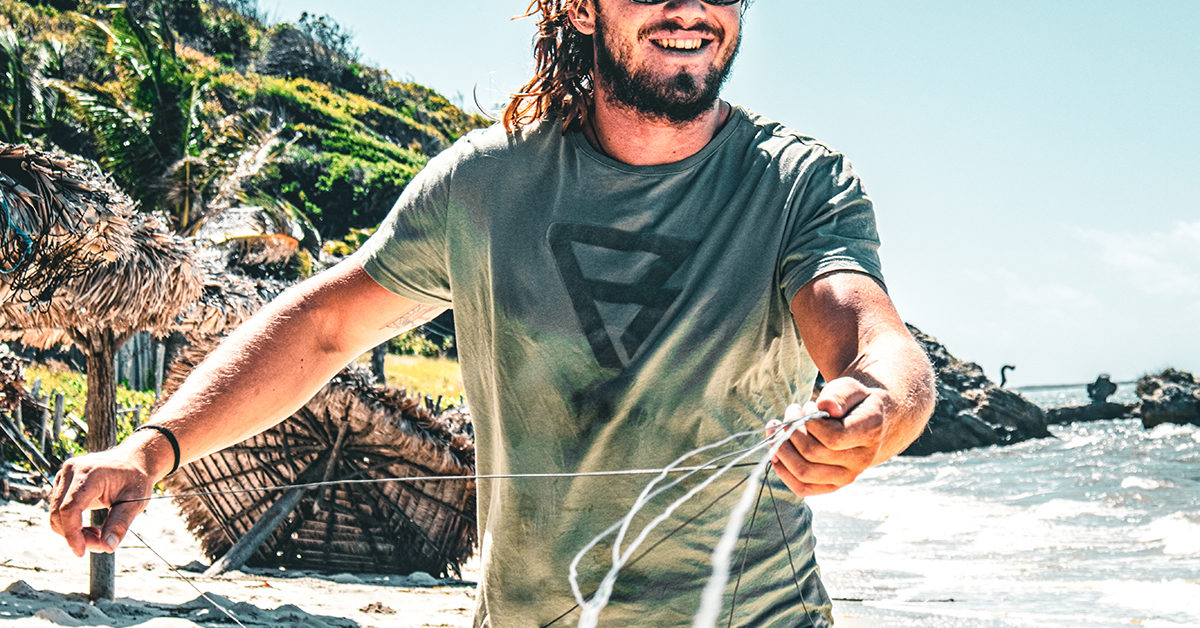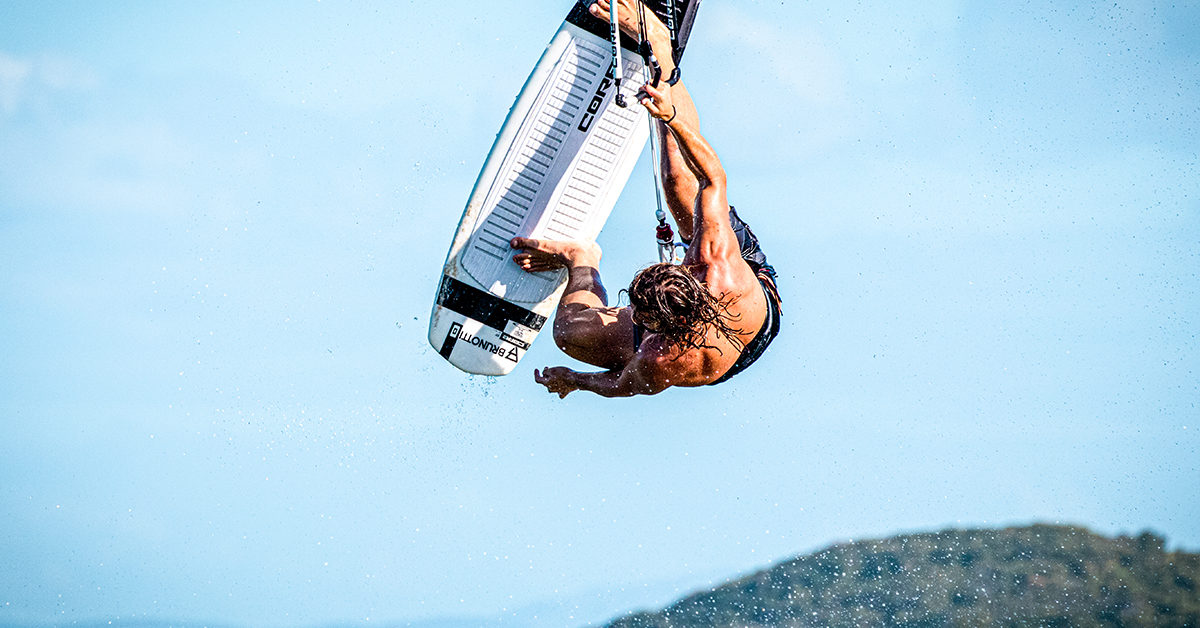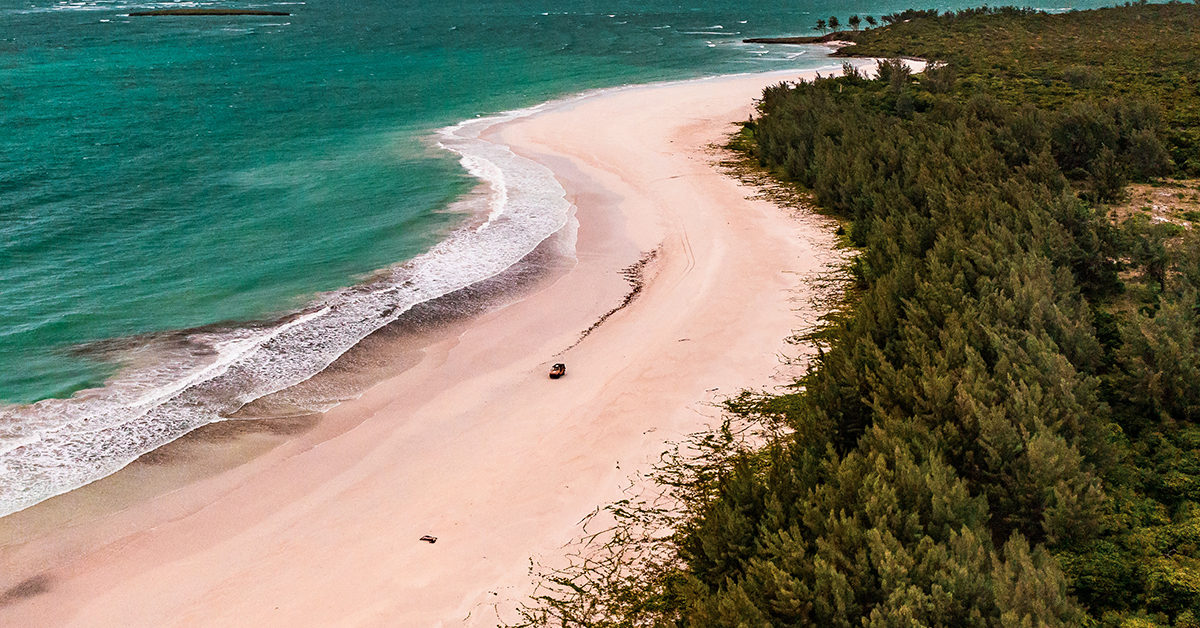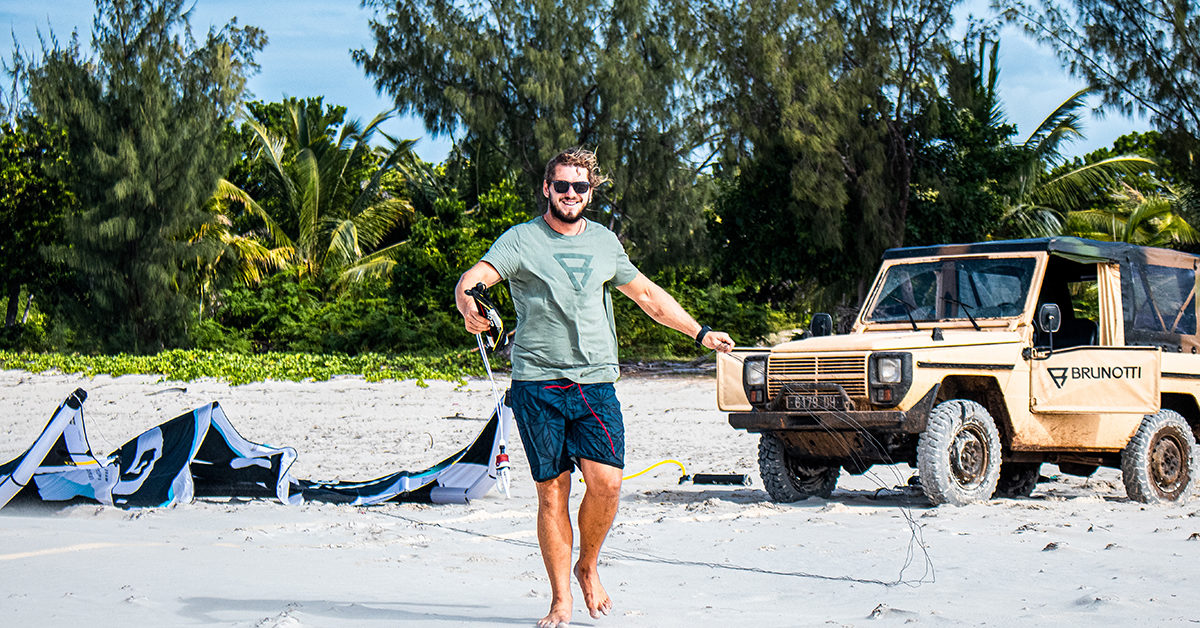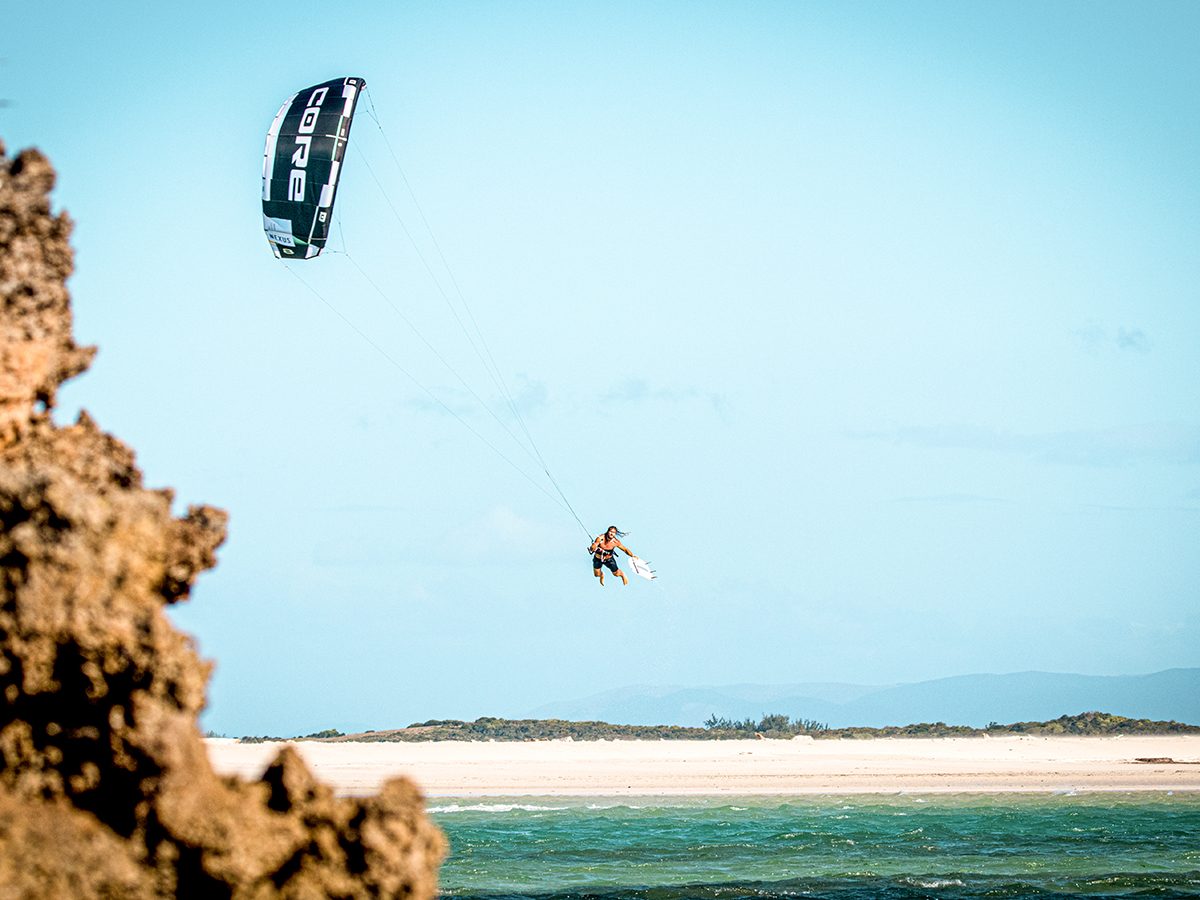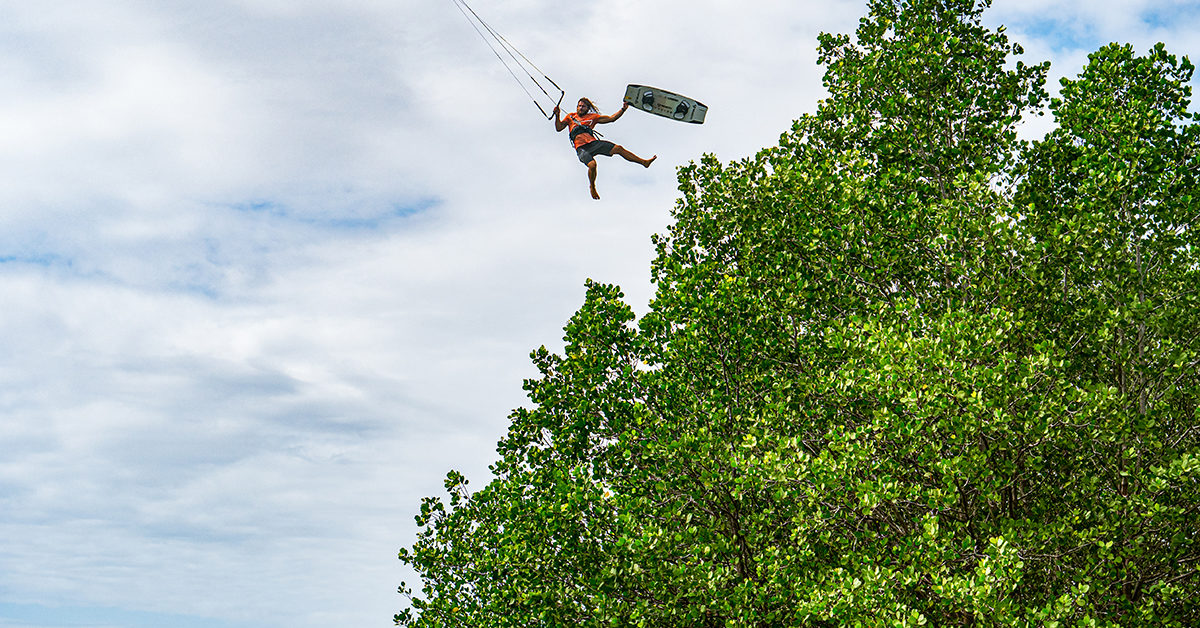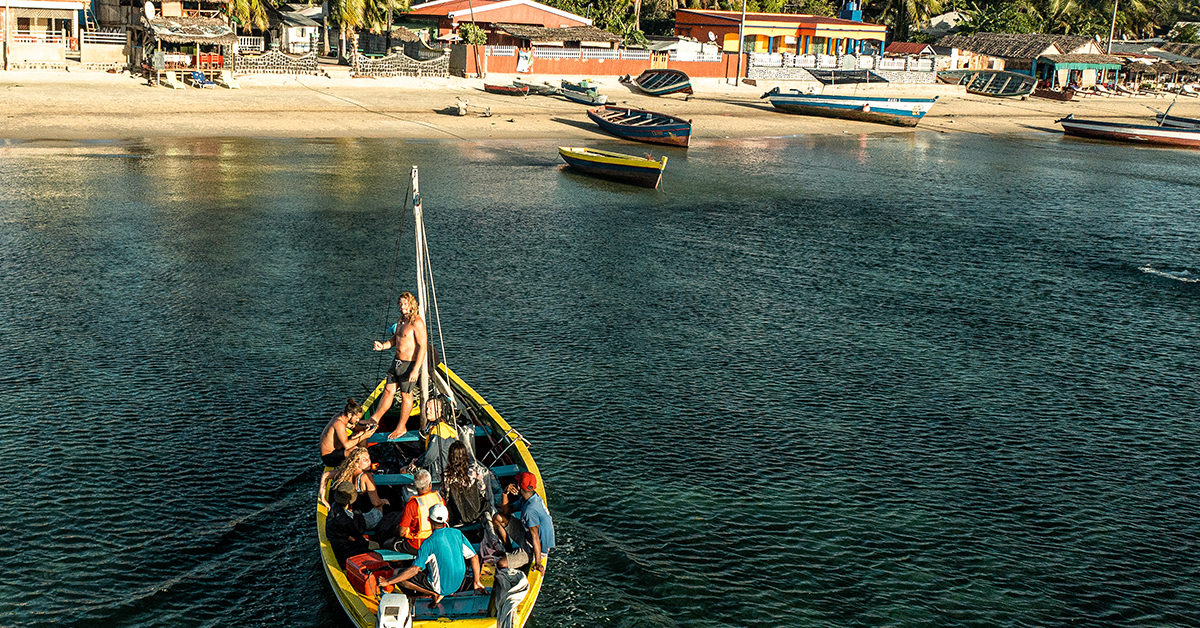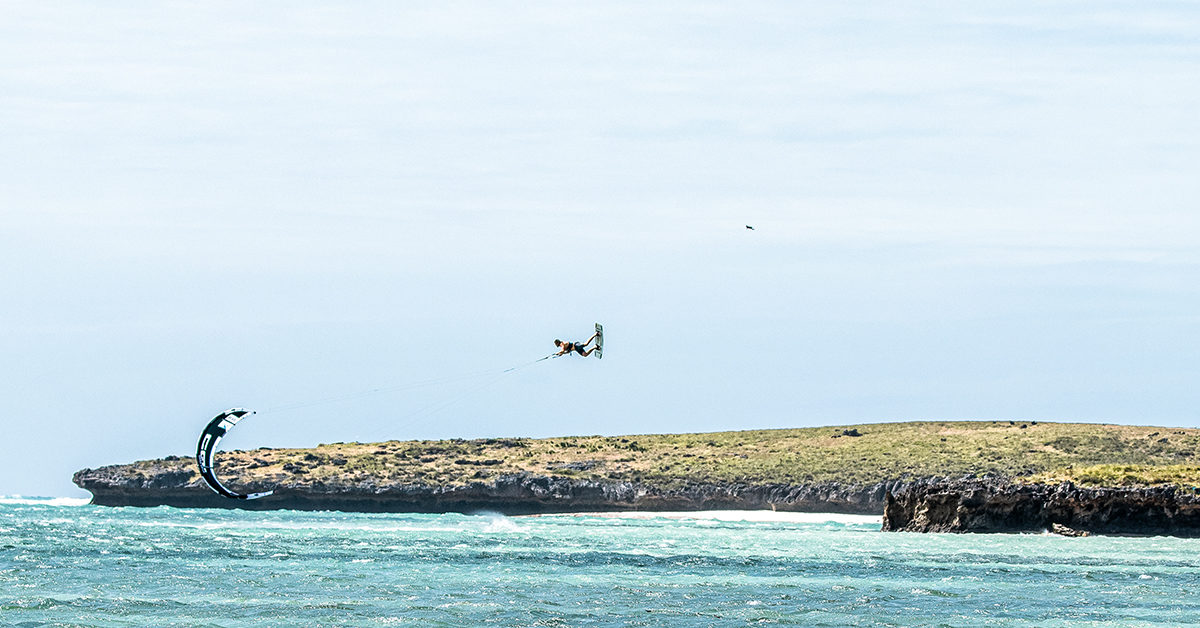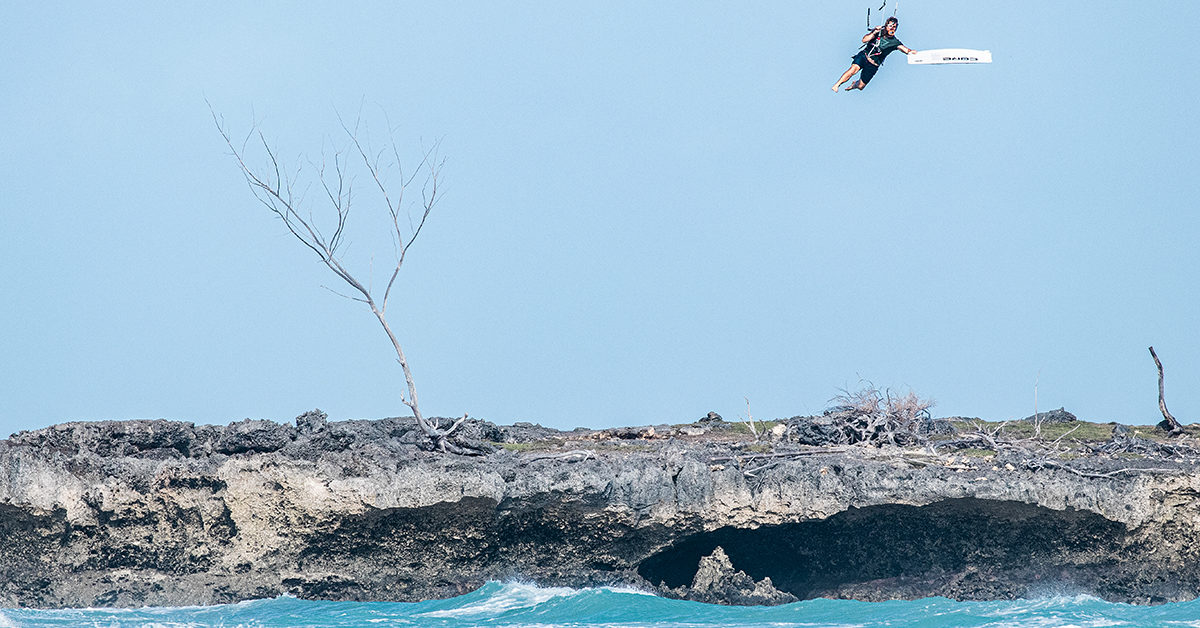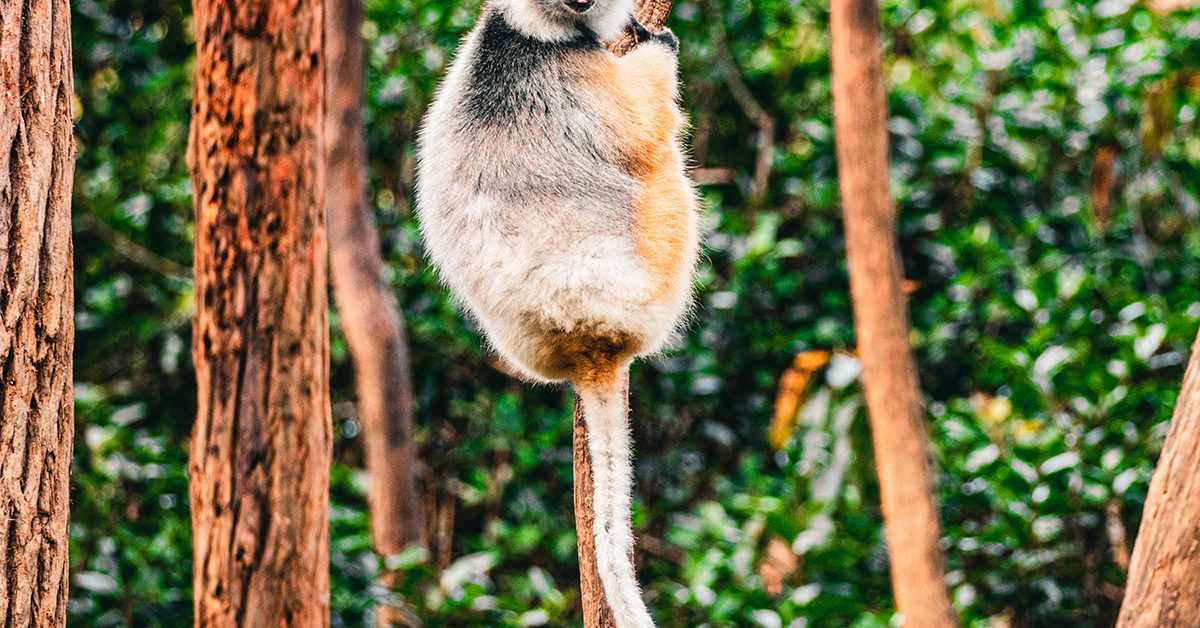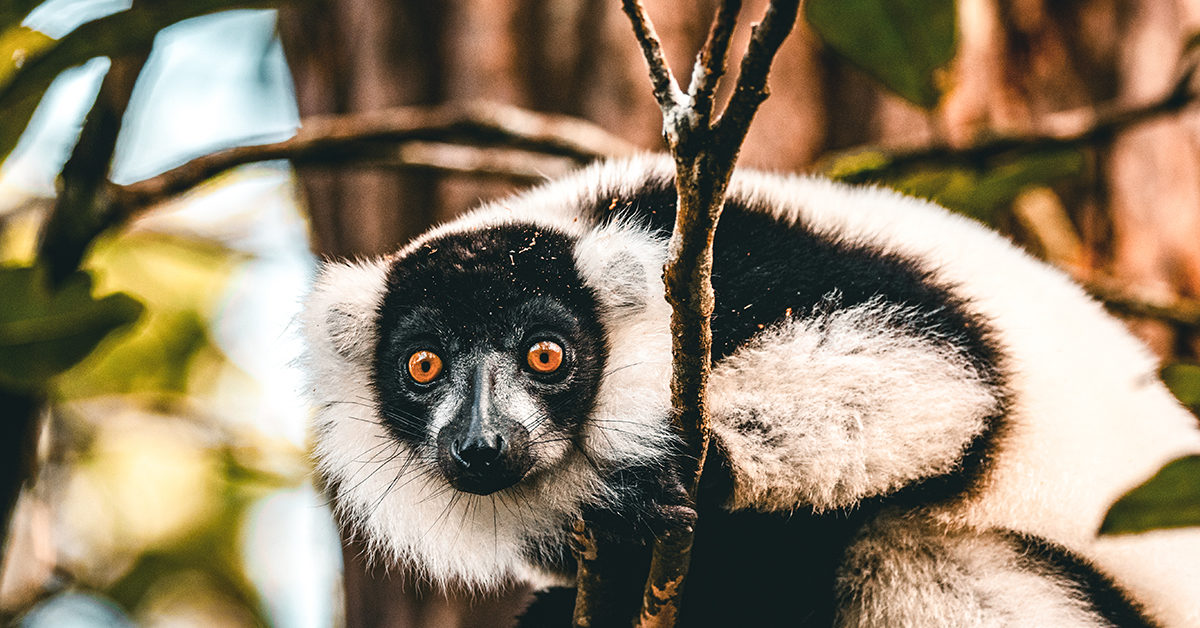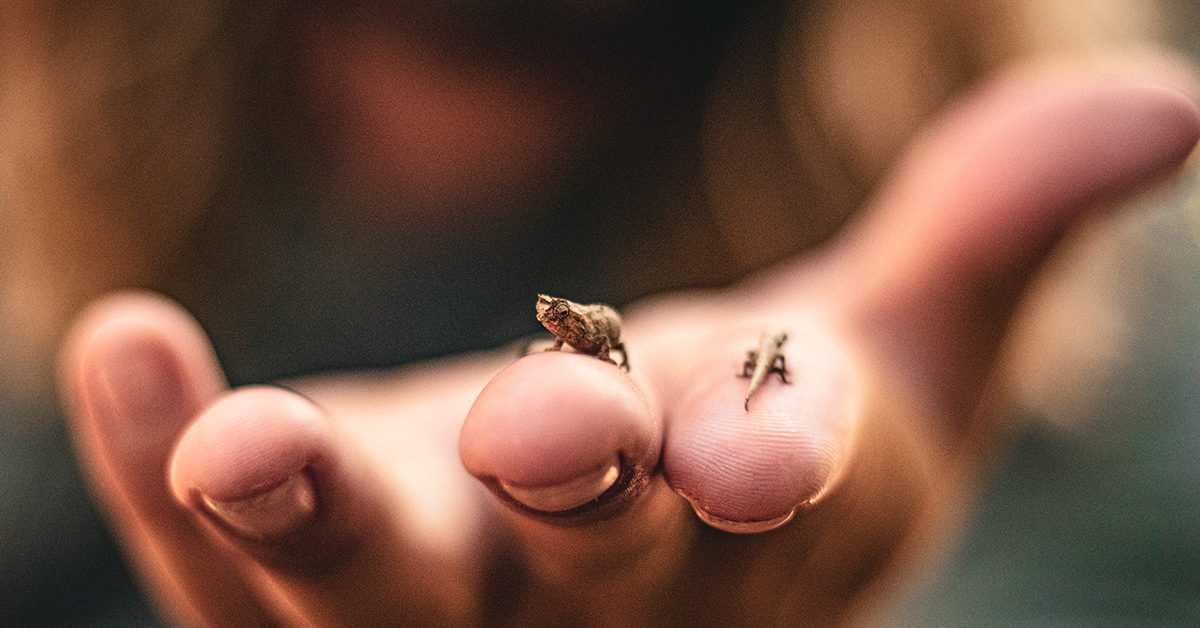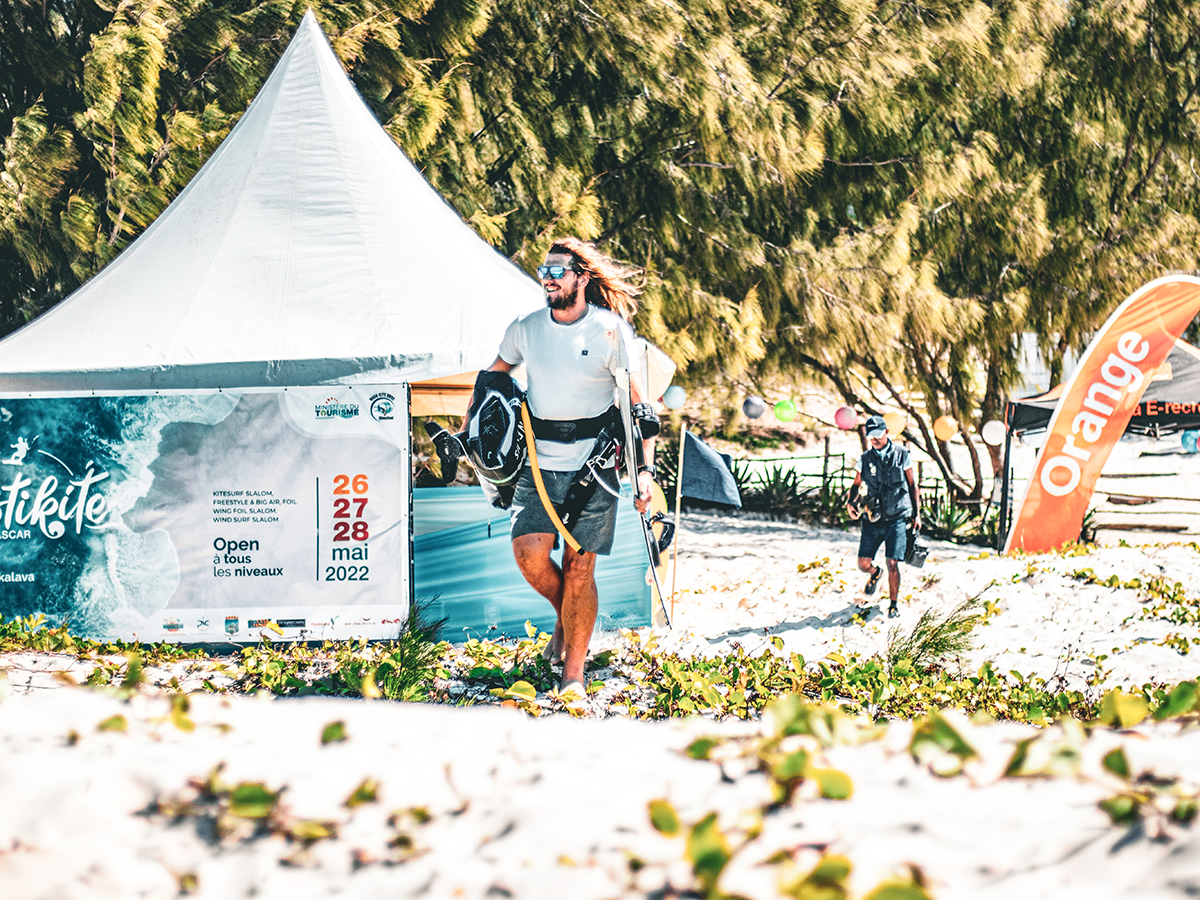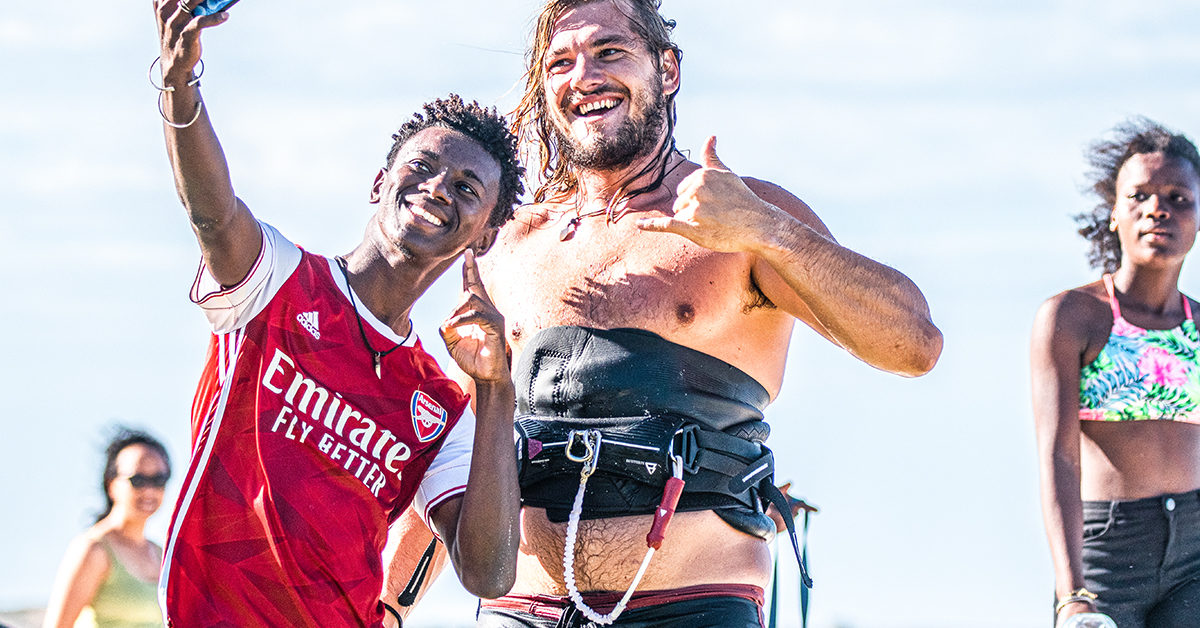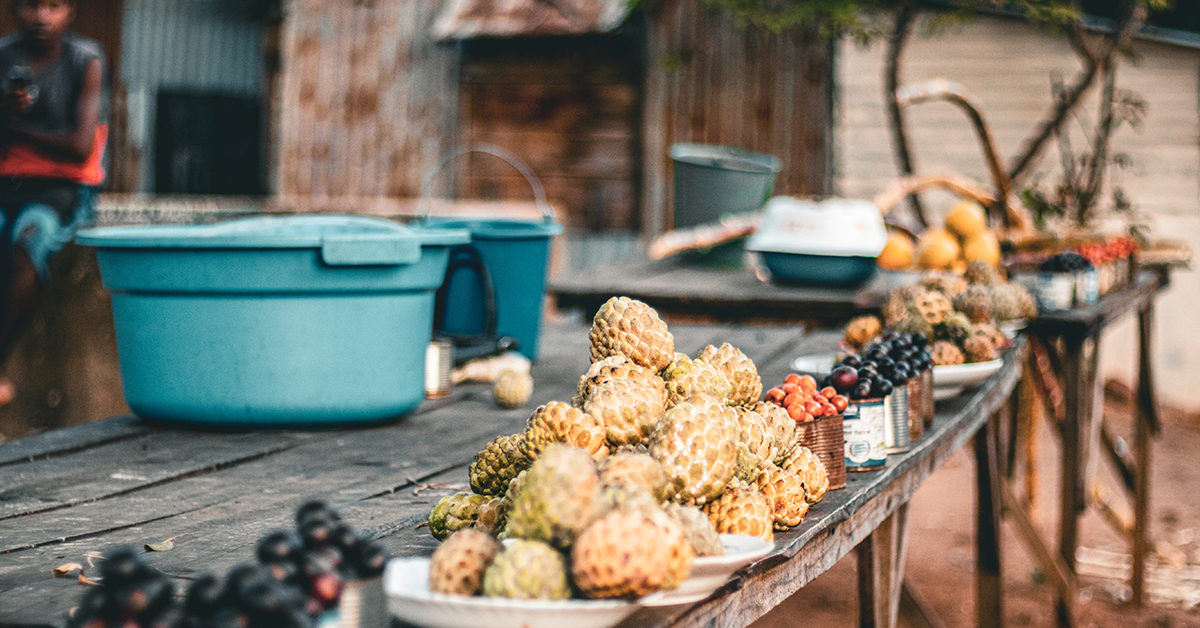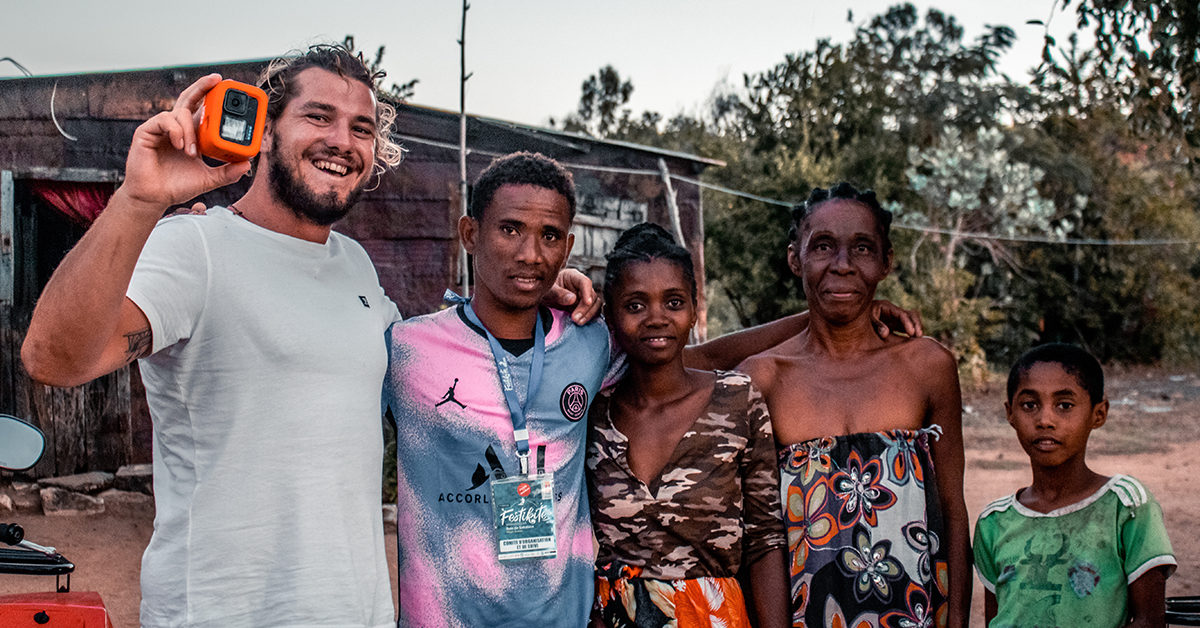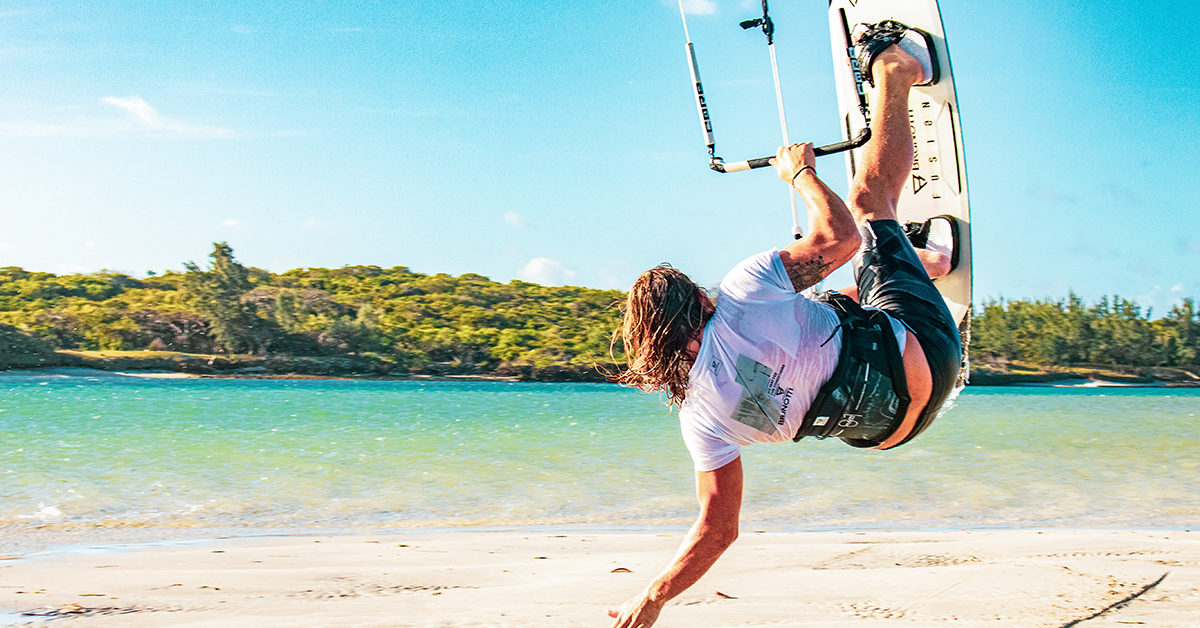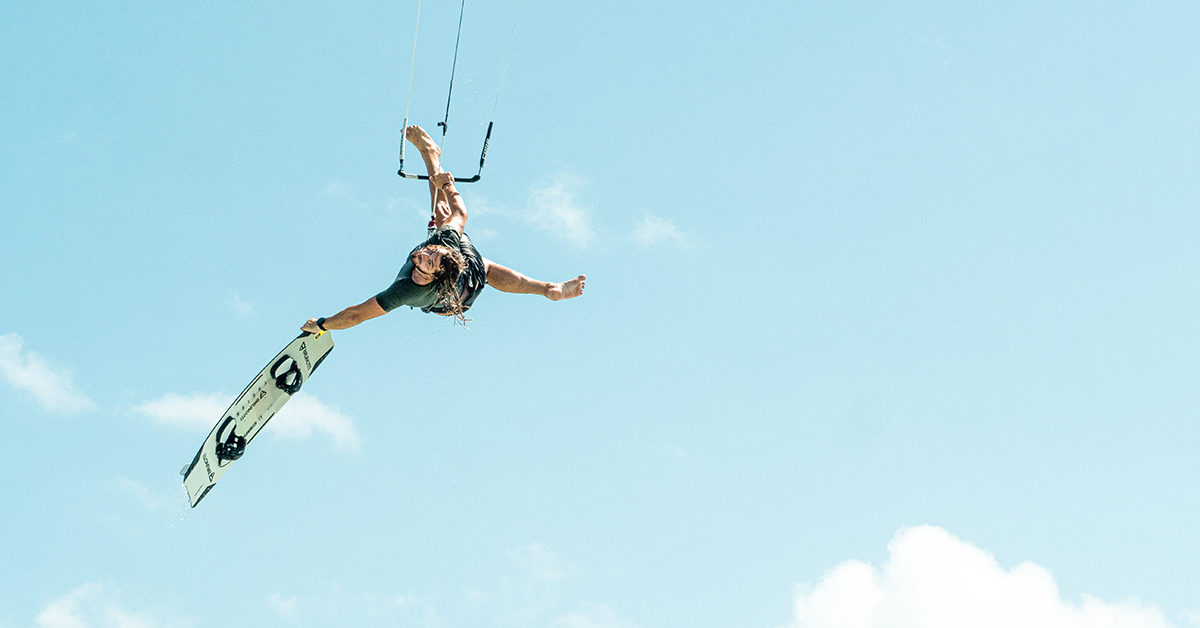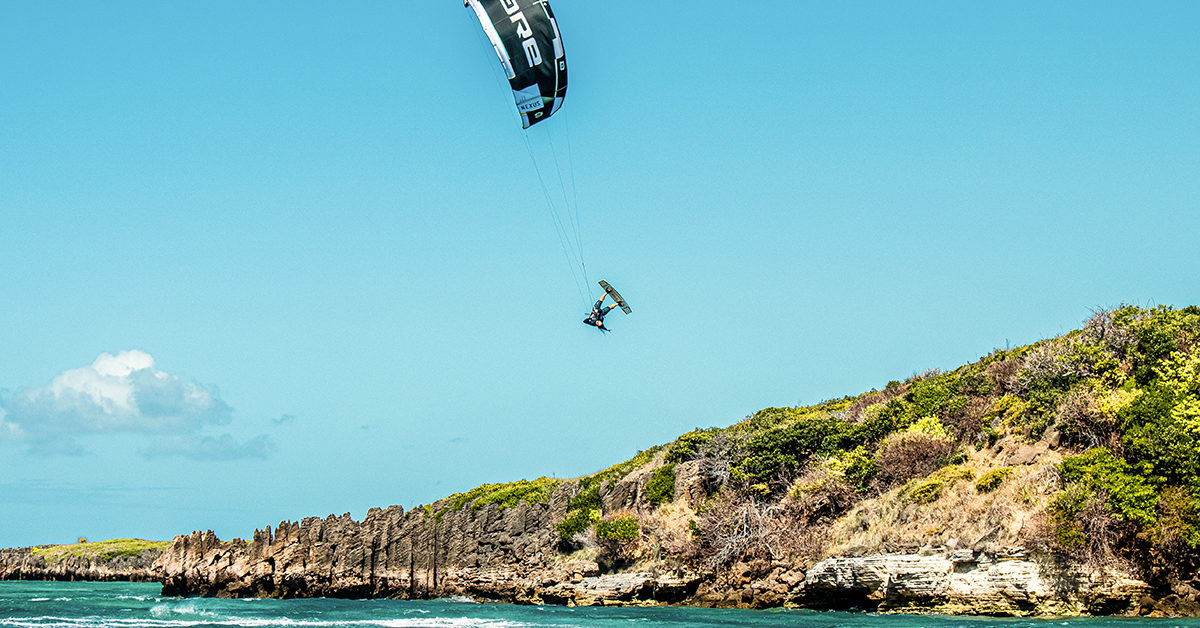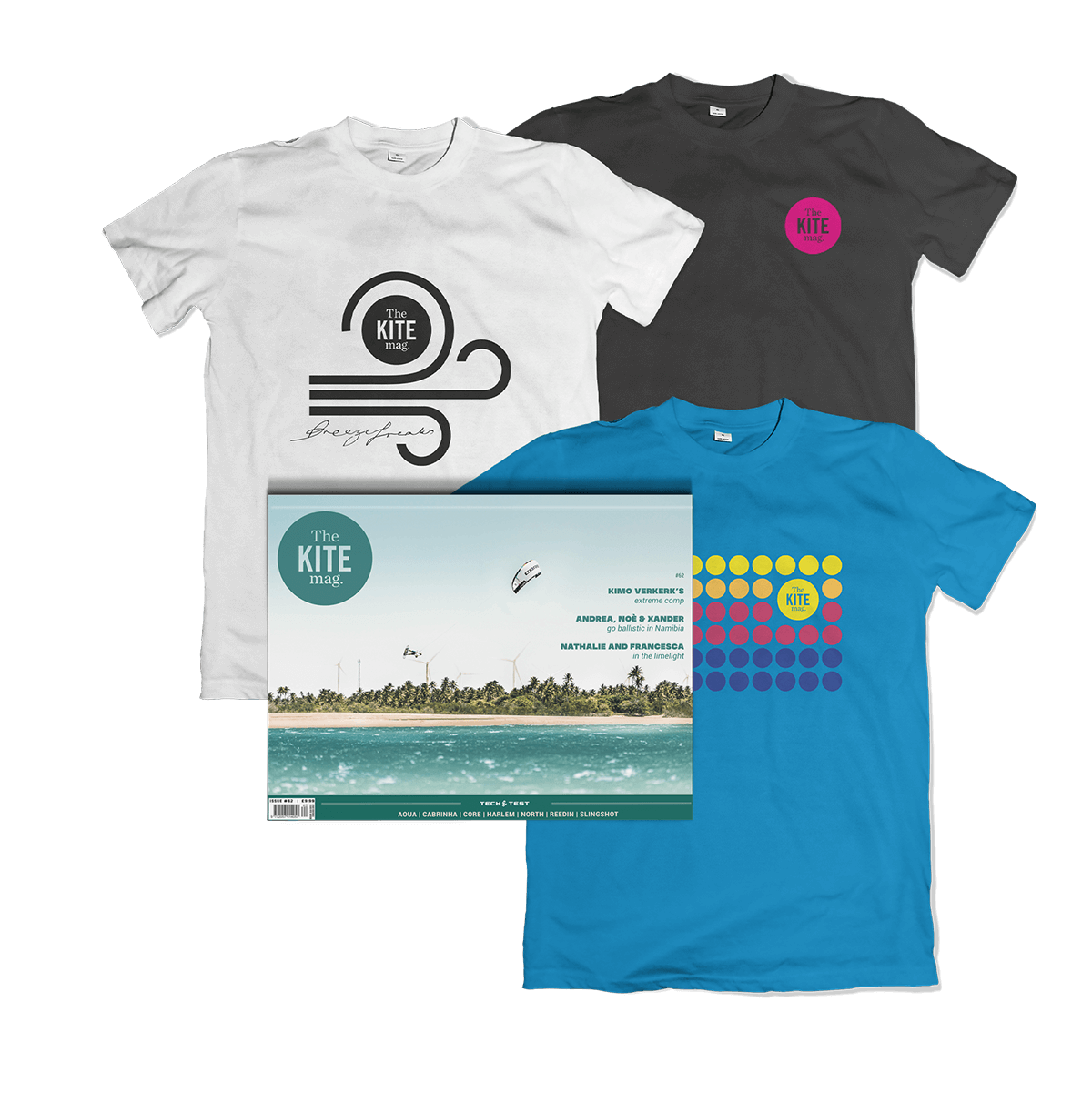Our next adventure took us aboard a wooden boat locally known as pirogues, to the Emerald sea, a lagoon located at the entrance of the bay of Diego Suarez, where the water is the most incredible turquoise color due to the sandy bottom and shallow waters. You can kite downwind from Sakalava Bay, but having the boat allowed us to scout different spots to shoot. The wind was solid, gusting around 35 knots. Sacha jumped into the water with the water housing to photograph the crazy looking rock formations. Then it was time for lunch on one of the small islands, out of the wind, giving us a breather and time to take in the incredible view. Just off to the right of us was another turquoise bay where I decided to do some strapless freestyle, another discipline I really enjoy. It takes a lot of hard work and training but the crashes are usually not as bad as Big Air. We had to make our way back to the little port earlier than expected, due to the tide change being so dramatic – there was a channel we had to get through before it dried up leaving us in the Emerald sea until the tide turned again. As we approached the channel we knew we were cutting it fine, as you could hear the rocks starting to scrape across the bottom of the boat… The boat finally came to a stop… A few of us jumped out to lighten the load just enough to make it through. Coming into Ramena bay you see all the locals collecting fish from the fish traps they lay out, to catch fish in order to feed their families. I am opposed to these traps as they target the young fish that still need to grow, but the options for food are very limited on this island.
We decided to take a drive inland, two hours away, to hike Amber Mountain. Arriving at the national park, Sacha and I realized we were not appropriately dressed, wearing shorts and a T-shirt, to walk in a mosquito-infested forest… The first thing that comes to mind is malaria. On the coast we hadn’t been bothered by mosquitos. I asked our guide which areas have malaria. He looked at me and said, “In the forest,” then seeing the shocked look on my face, smiled and said, “But not in this forest…” I was not convinced and was not enjoying that every time we stopped to take a picture, you would literally dance around, whilst trying to keep the camera still, just to evade being attacked by the mosquitos. But moving on, this place was magical; we walked to a dam that supplies nearby towns with water, a big hole completely surrounded by the forest. From there we went to a beautiful waterfall, and on our way back to the car our guide had one last thing to show us: a Brookesia micra, also known as the Nosy Hara leaf chameleon, which is the smallest chameleon in the world. A fully-grown male reaches a length of 2cm and a fully-grown female a length of 1cm. They are found at the bottom of the trees in leaf stacks. How our guide managed to find them I have no idea! I feel so privileged to have seen them, what an experience.

